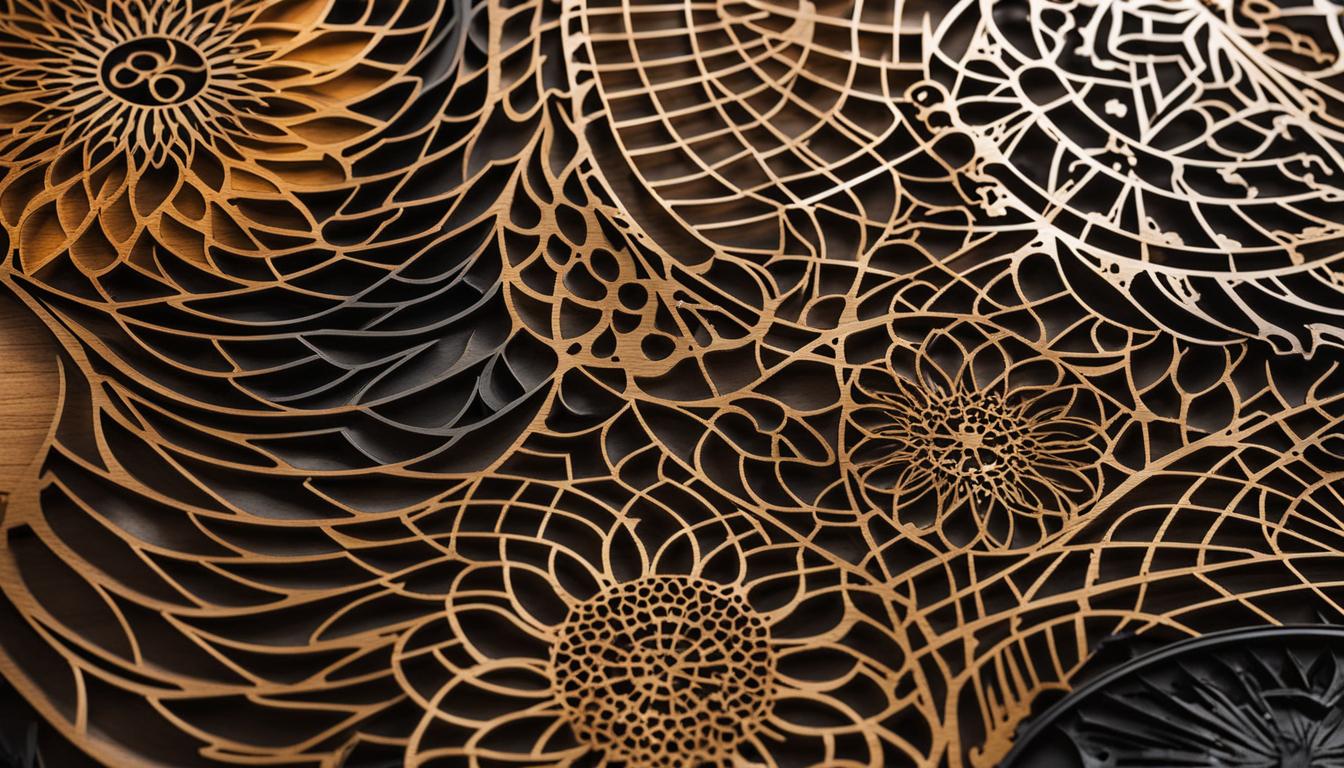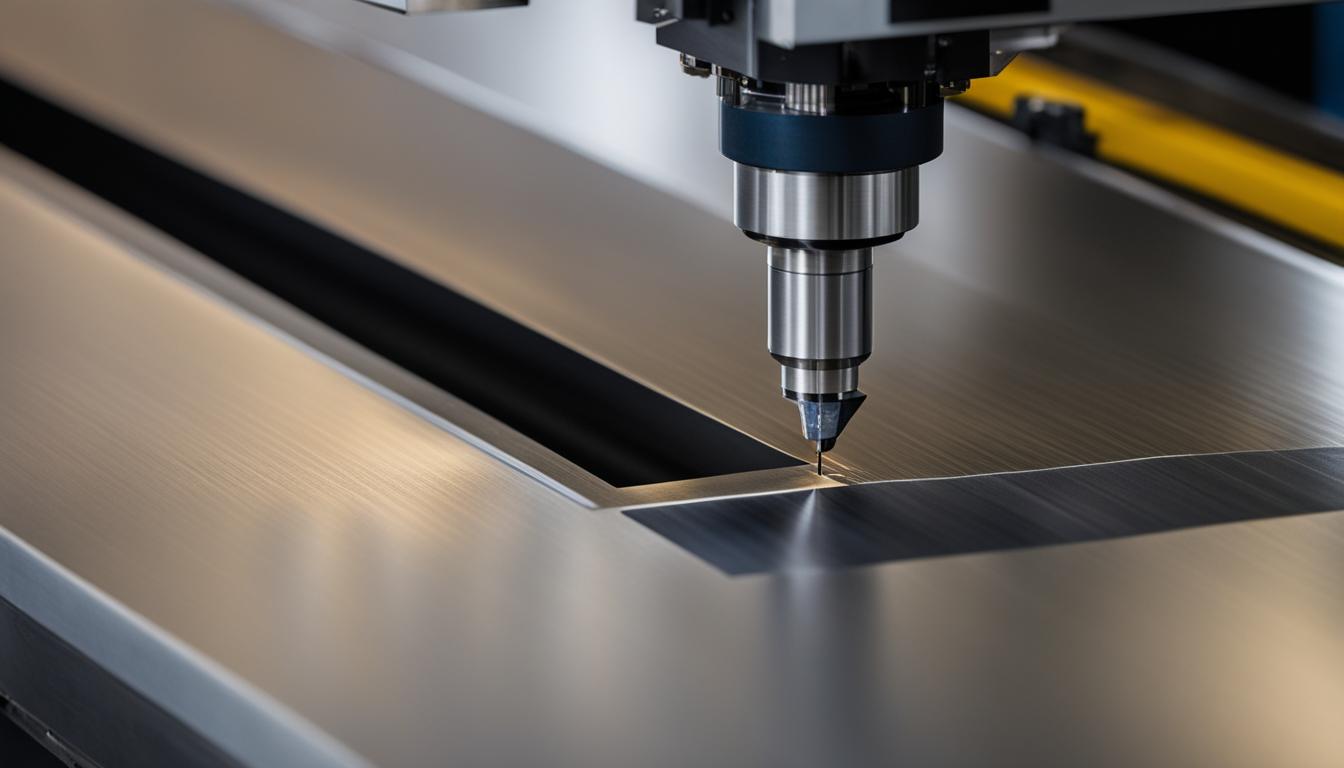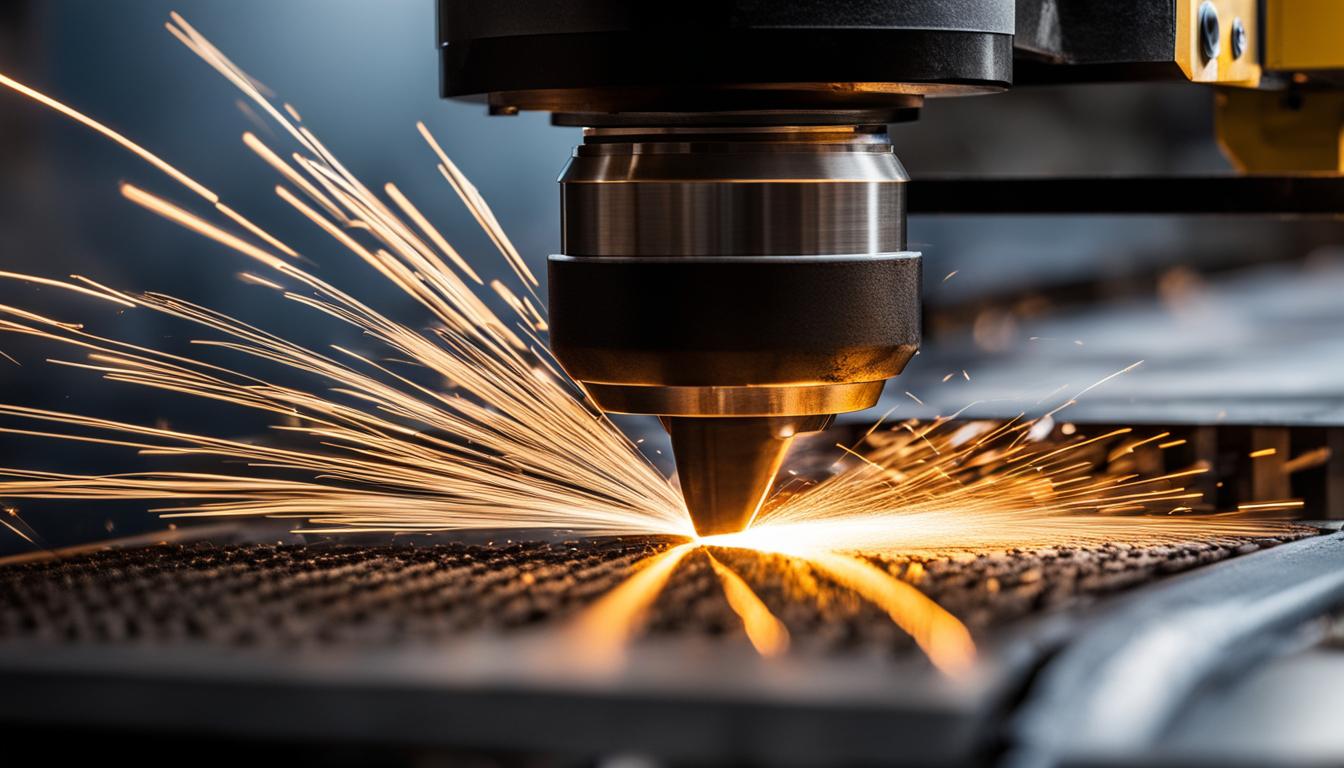Laser cutting is a highly efficient and versatile process that has revolutionized various industries. This cutting-edge technology utilizes a focused laser beam to heat and remove material, resulting in precise and intricate cuts. Understanding how laser cutting works and its numerous advantages can help businesses make informed decisions regarding their cutting needs.
The laser cutting process begins with a high-powered laser beam emitted from a laser cutting machine. This laser beam can be manipulated to achieve different cutting effects, such as heating the material to create a clean cut or vaporizing the material for faster cutting. The laser beam’s focus and intensity play a crucial role in the precision of the cutting process.
Laser cutting is suitable for a wide range of materials, including plastics, metals, wood, acrylic, paper, rubber, and leather. This versatility allows for a vast array of applications across various industries, such as automotive, aerospace, electronics, and fashion.
One of the main advantages of laser cutting is its high precision. Laser cutters offer exceptional accuracy, with positioning accuracy usually around 10 micrometers and repeatability of 5 micrometers. This level of precision makes laser cutting ideal for applications that require intricate designs and close tolerances.
Another significant advantage of laser cutting is its ability to perform material removal without the need for post-processing. Unlike other cutting methods, such as plasma cutting or mechanical chip removal cutting, laser cutting typically eliminates the need for additional steps like sealing or sanding. This results in streamlined production processes and cost savings.
- Laser cutting utilizes a laser beam to heat and remove material, resulting in precise cuts.
- The laser beam’s focus and intensity determine the cutting effect.
- Laser cutting is suitable for a wide range of materials, making it versatile across industries.
- It offers high precision, with precise positioning and repeatability.
- Post-processing requirements are minimal, leading to streamlined production and cost savings.
How Does Laser Cutting Work?
Laser cutting operates by utilizing a high-power laser beam that is directed onto the surface of the material to be cut. The laser beam interacts with the material, resulting in either heating, melting, or vaporization. This interaction is dependent on the properties of the material and the intensity of the laser beam.
When the laser beam heats the material, it causes it to reach its melting point or even vaporize. Once the laser beam fully penetrates the material, the cutting process commences. The laser system follows the selected geometry, guiding the laser beam to precisely separate the material along the desired path.
To achieve different cutting effects, the laser beam can be manipulated. It can be focused and intensified to heat the material, creating a clean cut. Alternatively, the laser beam can be used to vaporize the material, allowing for faster cutting speeds. The precision and accuracy of the cutting process are influenced by the focus and intensity of the laser beam during operation.
Advantages of Laser Cutting
Laser cutting offers several advantages over other cutting methods. It is a versatile technique that can be used to cut a wide range of materials, including plastics, metals, and fabrics. This material versatility makes laser cutting a popular choice in various industries.
One major advantage of laser cutting is that it often eliminates the need for post-processing. Unlike other cutting methods, such as mechanical sealing or sanding, laser cutting produces clean and precise cuts without the need for additional finishing processes. This not only saves time but also reduces production costs.
High accuracy is another key advantage of laser cutting. The laser beam used in the cutting process is extremely precise, resulting in a narrow cutting width, known as the kerf, that is barely larger than the laser itself. This level of precision ensures that the desired shapes and dimensions are achieved with minimal material waste.
Furthermore, laser cutting is a non-contact process, which means there is no direct contact between the cutting tool and the material. This eliminates the issue of tool wear commonly associated with mechanical cutting methods. As a result, laser cutting offers long-lasting durability, reducing maintenance and replacement costs over time.
Overall, laser cutting’s advantages lie in its material versatility, no post-processing requirements, high accuracy, and the absence of tool wear. These benefits make laser cutting an attractive option for industries where precision, efficiency, and cost-effectiveness are crucial.
Types of Laser Cutting
Laser cutting can be categorized into different types based on the specific laser used. The three main types of laser cutting are CO2 laser cutting, neodymium laser cutting, and neodymium yttrium-aluminium-garnet (Nd:YAG) laser cutting. Let’s explore each type in more detail:
1. CO2 Laser Cutting
CO2 lasers are widely used for cutting, boring, and engraving various materials. They use a carbon dioxide gas mixture to generate the laser beam. CO2 lasers are versatile and can cut materials like wood, acrylic, paper, fabric, and even some metals. They are known for their precision and smooth cutting edges.
2. Neodymium (Nd) Laser Cutting
Neodymium lasers are used for high energy, low repetition applications. They are efficient and reliable, making them ideal for cutting and drilling materials such as ceramics, plastics, and thin metals. Nd lasers provide a high power output, allowing for rapid cutting speeds and excellent cutting quality.
3. Neodymium Yttrium-Aluminium-Garnet (Nd:YAG) Laser Cutting
Nd:YAG lasers are similar to Nd lasers but are specifically designed for high-power applications. They are commonly used for boring and engraving processes that require intense laser power. Nd:YAG lasers are effective in cutting thick metals, such as steel and aluminum, but are also capable of cutting materials like plastics and ceramics.
| Laser Type | Applications | Materials |
|---|---|---|
| CO2 Laser | Cutting, boring, engraving | Wood, acrylic, paper, fabric, some metals |
| Neodymium (Nd) Laser | Cutting, drilling | Ceramics, plastics, thin metals |
| Neodymium Yttrium-Aluminium-Garnet (Nd:YAG) Laser | Boring, engraving | Thick metals (steel, aluminum), plastics, ceramics |
Materials Suitable for Laser Cutting
Laser cutting is a versatile process that can be used to cut a wide range of materials, making it suitable for various industries and applications. Whether you need to cut plastic, metal, wood, acrylic, paper, rubber, or leather, laser cutting can provide precise and efficient results.
Plastics such as ABS (Acrylonitrile Butadiene Styrene) and PET (Polyethylene Terephthalate) are commonly cut using laser technology. Laser cutting allows for intricate designs and precise cuts on plastic materials, making it ideal for applications in industries like signage, packaging, and electronics.
Metal cutting is another area where laser cutting excels. It can be used to cut metal foils, stainless steel, and other types of metal with high precision and clean edges. Laser cutting offers advantages over traditional cutting methods, such as reduced heat-affected zones and minimal distortion.
Wood is a versatile material that can be easily cut with laser technology. Whether you’re working with hardwood, plywood, or MDF (Medium-Density Fiberboard), laser cutting provides precise and clean cuts, allowing for intricate designs and patterns in woodworking projects.
Acrylic is a popular material in industries like signage, displays, and architectural models. Laser cutting acrylic offers precise and polished edges, making it ideal for creating intricate designs and shapes. The versatility of laser cutting allows for the creation of custom acrylic designs with ease.
Paper cutting is another application where laser technology shines. Laser cut paper offers intricate and precise designs, making it suitable for applications in crafts, invitations, and stationery. The precision of laser cutting ensures clean edges and allows for the creation of intricate details.
When it comes to cutting rubber and leather, laser cutting provides a clean and efficient solution. Laser cutting rubber allows for precise contour-cutting and intricate designs, making it suitable for applications in industries like gasket manufacturing and printing. Laser cutting leather provides clean and sealed edges, making it perfect for creating custom leather products, such as accessories and footwear.
Overall, laser cutting offers a wide range of materials suitable for cutting, making it a versatile and efficient option for various industries. The ability to cut materials like plastic, metal, wood, acrylic, paper, rubber, and leather with precision and ease makes laser cutting a valuable tool in modern manufacturing and design.

CO2 Laser Cutting Process
The CO2 laser cutting process involves the use of a current through a gas mix or radio frequency energy to generate the laser beam. There are different variants of CO2 lasers, including fast axial flow, slow axial flow, transverse flow, and slab.
The type of gas flow utilized can have an impact on the laser’s performance. The cooling methods are essential to dissipate the heat generated by the laser generator and external optics. One commonly used cooling method is water cooling, which offers advantages such as high dicing speeds and parallel kerf cutting.
| CO2 Laser Type | Gas Flow |
|---|---|
| Fast Axial Flow | Gas travels rapidly along the laser tube axis |
| Slow Axial Flow | Gas flows more slowly along the laser tube axis |
| Transverse Flow | Gas moves perpendicularly across the laser tube |
| Slab | Gas flows parallel to the slab’s broad surface |
Fiber Laser Cutting
Fiber lasers are revolutionizing the metal cutting industry with their advanced capabilities and efficiency. Unlike CO2 lasers, which use a gaseous medium, fiber lasers utilize a solid gain medium, typically a rare-earth-doped fiber, to generate the laser beam. This design enables fiber lasers to achieve a much smaller spot size, making them highly suitable for cutting reflective metals.
The small spot size of fiber lasers allows for precise and clean cuts, even on highly reflective materials like copper and brass. This is because the concentrated laser beam can efficiently penetrate and cut through the reflective surface without causing excessive heat or thermal damage. The use of a solid gain medium also contributes to higher power density, improving the cutting speed and overall productivity of fiber laser systems.
In addition to their cutting capabilities, fiber lasers offer several other advantages. They have rapid processing times, enabling faster production rates compared to traditional cutting methods. Fiber lasers also have reduced energy consumption, making them more environmentally friendly and cost-effective. Furthermore, fiber lasers are known for their greater reliability and lower maintenance requirements, resulting in less downtime and increased profitability for manufacturers.
Overall, fiber laser cutting technology provides manufacturers with a highly efficient and precise tool for cutting reflective metals. Its combination of a solid gain medium, small spot size, and advanced laser technology offers numerous benefits, from improved productivity and energy efficiency to enhanced reliability and maintenance cost savings.

Different Laser Cutting Techniques
Laser cutting offers a range of techniques that can be used depending on the desired outcome and the material being cut. Each technique has its own advantages and applications, making laser cutting a versatile solution for various industries.
Vaporization Cutting
Vaporization cutting involves heating the material’s surface to a flashpoint and creating a keyhole. The intense heat causes the material to vaporize, allowing for precise and clean cuts. This technique is commonly used for materials like metals and plastics.
Melt and Blow Cutting
Melt and blow cutting utilizes high-pressure gas to blow molten material away. The laser beam heats the material, causing it to melt, and then the gas quickly removes the melted material. This technique is useful for cutting thick materials or materials with high heat conductivity.
Thermal Stress Cracking
Thermal stress cracking involves creating localized heating to induce cracks in brittle materials. By precisely controlling the heat and cooling rate, this technique can create intricate patterns or shapes in materials like glass or ceramics.
Scribing
Scribing is a technique that involves scoring or scratching the material’s surface. This creates a weakened line that enables easier separation during the cutting process. Scribing is commonly used for materials like glass, semiconductors, or thin films.
Cold Cutting
Cold cutting refers to the process of cutting materials without generating excessive heat. This technique is suitable for heat-sensitive materials or those prone to deformation. By using a low-power laser, cold cutting can achieve precise cuts without causing thermal damage.
Burning Stabilized Laser Cutting
Burning stabilized laser cutting utilizes a laser beam combined with an assist gas to enhance the cutting process. The assist gas creates an exothermic reaction that helps sustain the cut and prevents re-hardening of the melted material. This technique is commonly used for materials like stainless steel or titanium.
These different laser cutting techniques offer flexibility and precision, allowing for a wide range of applications across industries. By choosing the right technique for the material being cut, manufacturers can achieve efficient and accurate results.
Tolerances and Surface Finish
Laser cutters are renowned for their exceptional precision, providing positioning accuracy of around 10 micrometers and repeatability of 5 micrometers. This level of precision ensures that each cut is executed with utmost accuracy, meeting even the most stringent requirements of various industries.
When it comes to surface finish, several factors influence the final outcome. The laser power, cutting speed, and material thickness all play a role in determining the quality of the cut edge. It is important to note that as the sheet thickness increases, the roughness of the cut edge, represented by the standard roughness Rz, also tends to increase. However, by carefully optimizing the laser power and cutting speed, it is possible to achieve a smoother surface finish.
One of the significant advantages of laser cutting is its ability to maintain excellent positioning accuracy and repeatability across a wide range of materials and thicknesses. This consistency ensures that even complex designs can be precisely replicated, resulting in high-quality and accurate cuts every time. Laser cutting also offers additional benefits, such as improved work holding, reduced contamination of the workpiece, and minimal risk of warping, thanks to the small heat-affected zone produced during the cutting process.
